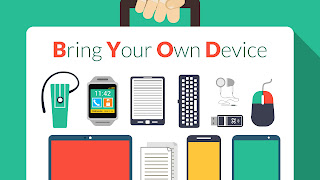Twitter Feed
NJVC Platform as a Service to Include Google Geospatial Services for NCOIC Geospatial Community Cloud Project in Support of Disaster Relief Efforts
CHANTILLY, Va., July 9, 2013 — NJVC® was selected by Network Centric Operations Industry Consortium (NCOIC) to provide the platform as a service (PaaS) element of a cloud-computing-based humanitarian assistance…
Fathers of Clouds – A Tribute
(A guest post from Mr. Ray Holloman, NJVC Digital Communications Manager ) For more than half a century, cloud computing has changed names more often than a Hollywood starlet. Utility…
CNBC Closing Bell: Bob Gourley on NSA Leaker
This is clearly off topic, but I couldn’t help myself! Please take a moment to view this CNBC video where my good friend Bob Gourley addresses this important event. Good…
Guest Blog: Sequestration and the Cloud
(This post was provided by Praveen Asthana, Chief Marketing Office of Gravitant, a cloud service brokerage and management company) Sequestration burst out of obscurity and entered our household vocabulary in…
Join Me at the Gartner IT Infrastructure & Operations Management Summit
Please join me at the Gartner IT Infrastructure & Operations Management Summit in Orlando, Florida, June 18-20, 2013, where my session topic will be “Cloud Service Integration: Increasing Business Value…
Five Years of Cloud Musings!!
https://kevinljackson.blogspot.com/2008/05/hello-world-april-18-2008.html “Sunday, April 18, 2008 Hello World ! – April 18, 2008 I’ve been toying with the idea of doing a blog for about six months now. Initially I didn’t…
Global Interoperability Consortium’s Cloud Computing Project Detailed at NATO Conference
PRESS RELEASEApril 30, 2013, 2:30 p.m. ET Eric Vollmecke of the Network Centric Operations Industry Consortium reports the proliferation of geospatial information will pose problems for disaster responders and describes…
IBM Debate Series – What’s Next in IT?
Next week I will be participating in the inaugural session of What’s Next in IT Debate Series, a new program of authentic debates and conversations on key technology topics. Sponsored…
Lisbon Bound: NATO Network Enabled Capability Conference 2013
This week I will have the honor of attending the 2013 NNEC Conference at the Corinthia Hotel in Lisbon, Portugal. The NNEC conference is an annual event which has been sponsored by HQ…
Demystifying PaaS for Federal Government
Join us on April 16, 2013 at 1 PM EDT to remove the mystery surrounding Platform-as-a-Service (PaaS) for Federal Government https://attendee.gotowebinar.com/register/8966264786104832512 The PaaS market is plagued with confusion, and agencies…
- Increased employee mobility (63%), satisfaction (56%) and productivity (55%) dominate as the top drivers of BYOD. These employee related drivers are considered more important than reduced costs (47%).
- Security (39%) and employee privacy (12%) are the biggest inhibitors of BYOD adoption.
- 20% of surveyed organizations have suffered a mobile security breach, primarily driven by malware and malicious WiFi.
- Security threats to BYOD impose heavy burdens on organizations’ IT resources (35%) and help desk workloads (27%).
- Despite increasing mobile security threats, data breaches and new regulations, only 30% of organizations are increasing security budgets for BYOD in the next 12 months and 37% have no plans to change their security budgets.
- 72% – Data leakage/loss
- 56% – Unauthorized access to company data and systems
- 54% – Downloading of unsafe apps or content
- 52% – Malware
- 50% – Lost or stolen devices
- 49% – Vulnerability exploitation
- 48% – Lack of control on endpoint security
- 39% – Infrequent software updates
- 38% – Compliance
1. Create your policy before procuring technology: To effectively use mobile device management (MDM) technology for employee owned devices Policy must precede technology. Also note that these policies will have broad corporate-wide implications for IT, HR, legal, and security.
- Mobile device management
- Application security assessments
- Application testing services
- Application source code security assessments; and
- Embedded device security.
This post was brought to you by IBM Global Technology Services. For more content like this, visit ITBizAdvisor.com.
( Thank you. If you enjoyed this article, get free updates by email or RSS – © Copyright Kevin L. Jackson 2017)
Cloud Computing
- CPUcoin Expands CPU/GPU Power Sharing with Cudo Ventures Enterprise Network Partnership
- CPUcoin Expands CPU/GPU Power Sharing with Cudo Ventures Enterprise Network Partnership
- Route1 Announces Q2 2019 Financial Results
- CPUcoin Expands CPU/GPU Power Sharing with Cudo Ventures Enterprise Network Partnership
- ChannelAdvisor to Present at the D.A. Davidson 18th Annual Technology Conference
Cybersecurity
- Route1 Announces Q2 2019 Financial Results
- FIRST US BANCSHARES, INC. DECLARES CASH DIVIDEND
- Business Continuity Management Planning Solution Market is Expected to Grow ~ US$ 1.6 Bn by the end of 2029 - PMR
- Atos delivers Quantum-Learning-as-a-Service to Xofia to enable artificial intelligence solutions
- New Ares IoT Botnet discovered on Android OS based Set-Top Boxes


